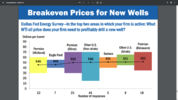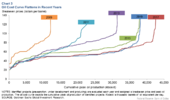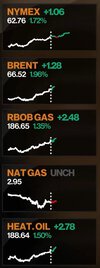- Joined
- 14 February 2005
- Posts
- 15,389
- Reactions
- 17,814
I'll avoid political comment as such and simply note that any US President is far more likely to influence production than consumption in the short to medium term at least.The Green Biden Bogeyman hasn't stomped on it yet.
Short of grounding aircraft and stopping anyone driving, there's not much they can really do to influence the consumption end right now. Any impact there would be a very long term one - encouraging a shift to electric vehicles and things like that.
On the production side though, well they can certainly impose tighter regulations in the industry, not make Federal lands available and things like that. Doing so will push production down not up.
The previous US President was at an extreme in terms of being favourable to production. Anything this one does can't realistically exceed that, it can realistically only be somewhere between the same and less favourable to production in practice.













